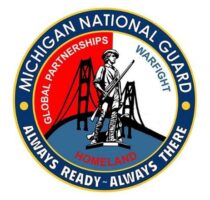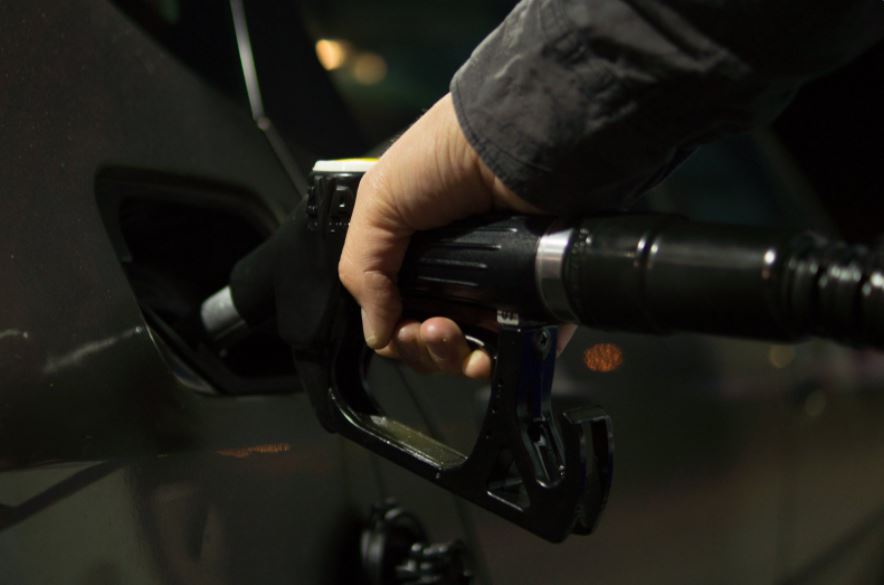|
By KATHLEEN LAVEY
Michigan Department of Natural Resources
Paul Dunn has been fighting wildfires in Michigan for 15 years, the last two of them as a full-time firefighter for the Michigan Department of Natural Resources.
Late this summer, he got his first chance to go west, driving a DNR Type 6 off-road engine with colleague Ben Osterland, arriving at the Lake Fire near Santa Clarita, California on Aug. 24. The fire burned more than 31,000 acres of big-cone Douglas fir, oak and gray pine between Aug. 12 and Sept. 28.
Once on site, the duo from Michigan was assigned to mop-up duties in areas where the fire had already passed through. They made many trips up and down the mountain to look for hot spots, pulled hose out of the area and restored the landscape, as much as possible, to its native state.
They were up at 5 a.m., working in remote country in 90-degree heat, wearing 25-40 pounds of gear while working at their jobs.
For Dunn, the experience offered a chance to take in the breathtaking beauty of the west, as well as an opportunity to build firefighting skills he can use back home in Michigan.
 “Before I was full-time, I did this for fun on my days off from my other jobs in Michigan,” Dunn said. “Coming out to California is like a big bonus. You get to see the country. You meet a lot of good people from all over.” “Before I was full-time, I did this for fun on my days off from my other jobs in Michigan,” Dunn said. “Coming out to California is like a big bonus. You get to see the country. You meet a lot of good people from all over.”
Dunn and Osterland are among DNR staffers who filled 90 out-of-state assignments during the 2020 wildfire season, even though COVID-19 kept them from traveling until the middle of August.
This year, DNR individuals and teams have taken seven fire engines west, worked on direct fire lines and served various leadership positions on fire management teams in California, Colorado, Oregon, Arizona, Utah and Wyoming.
Their help was essential.
Spurred by hot, dry conditions in much of the west during 2020, wildfires have burned more than 8 million acres across western landscapes, with record-setting blazes sometimes forcing quick evacuations of towns and cities.
DNR staffers Glenn Palmgren and Keith Murphy are part of an interagency Eastern Area Type 2 Incident Management Team. They were summoned to California’s capital city of Sacramento in early September to be placed on emerging fires as needed. |
 Their first assignment was the Bobcat Fire in suburban Los Angeles, which started Sept. 6 and burned more than 115,000 acres. The fire destroyed or damaged more than 170 homes and other structures, which made for some scary moments. Their first assignment was the Bobcat Fire in suburban Los Angeles, which started Sept. 6 and burned more than 115,000 acres. The fire destroyed or damaged more than 170 homes and other structures, which made for some scary moments.
“That was the most intense incident management experience that Keith and I have ever had, with tens of thousands of homes being threatened,” Palmgren said.
Managers had to make fast decisions as the fire moved across the landscape toward heavily populated areas.
“There’s a lot of triage involved in firefighting,” Palmgren said. “Things like human life always take first-priority, and we have to work with local units of government on evacuations.
“Next, after human life is property, and we work really hard to try to keep the fire from destroying people’s homes and businesses. When we’re in that kind of a mode, and the fire is moving fast, we call that ‘point protection.’
“We can’t put the fire out during the most extreme conditions. We’re trying to protect people and their homes. It’s a matter of meeting the highest priorities that we can while trying to stop the fire.”
The Type 2 team Murphy and Palmgren were assigned to was called off as the Bobcat Fire continued to expand. The team was replaced with a Type 1 team rated for more complex events. |
 Murphy and Palmgren were then reassigned to the Brattain Fire, eight hours north near Paisley, Oregon. It started Sept. 7 and burned more than 50,000 acres as firefighters worked to cope with extremely dry conditions and high winds. Murphy and Palmgren were then reassigned to the Brattain Fire, eight hours north near Paisley, Oregon. It started Sept. 7 and burned more than 50,000 acres as firefighters worked to cope with extremely dry conditions and high winds.
“Once the town was secured and protected, it was about trying to protect the grazing lands and timber,” Palmgren said. “Fire can leave cattle without food in that part of the country, so protecting grazing land was important.”
Palmgren and Murphy spent two weeks in Oregon, working with firefighters from across the eastern region of the country, including 10 firefighters from New York City.
Palmgren said he enjoys the challenge of diving into a new fire situation.
“It’s everything from saving people’s lives to saving their livelihoods and their property,” he said. “And it helps us keep our own skills sharp. We learn valuable lessons that can help us do a better job here in Michigan.”
After coming home for a few weeks, Palmgren and Murphy returned to California to spend two weeks on the Dolan Fire, which has burned about 125,000 acres south of Big Sur, since it was reported on Aug. 18. |
 Paige Gebhardt, a resource analyst with the DNR’s Forest Resources Division, makes maps that include layers of data to help firefighters get to where they’re going and assess what’s happening there. Paige Gebhardt, a resource analyst with the DNR’s Forest Resources Division, makes maps that include layers of data to help firefighters get to where they’re going and assess what’s happening there.
Gebhardt is currently in training on fire duty. Her first assignment was as part of a mapping team on the 1 million-acre August Complex fire in California in early September. She was also invited to work on the 176,000-acre Mullen Fire south of Centennial, Wyoming in October.
Maps are key in fighting fires, and the technology for creating them is evolving. Paper maps are important and are updated every day. But more and more, maps are going digital.
“Staff can go in and change information in real-time based on what is happening on the ground,” Gebhardt said.
Gebhardt also created “story maps” that combine journalistic-style text and photos displayed online with maps, to relay information to the public. |
 “There are definitely tight deadlines,” Gebhardt said. “Major stress came in when we couldn’t produce maps fast enough and get them to the people on the ground.” “There are definitely tight deadlines,” Gebhardt said. “Major stress came in when we couldn’t produce maps fast enough and get them to the people on the ground.”
Gebhardt didn’t know what to expect going into the experience, but she came away with better skills and higher confidence.
“I just didn’t really know what to expect from me and my job,” she said. “But I learned I can produce the maps quickly and interact with people and a team.”
Michigan is always compensated fully for expenses related to western fire assignments, and there are always firefighters ready at home to handle things that come up here.
“Out-of-state assignments are just a great way for the team to build skills,” said Dan Laux, fire section chief for the DNR’s Forest Resources Division. “These assignments are a win for the states that need help and for our DNR team.” |
Check out previous Showcasing the DNR stories in our archive at Michigan.gov/DNRStories. To subscribe to upcoming Showcasing articles, sign up for free email delivery at Michigan.gov/DNR.
/Note to editors: Contact: John Pepin, Showcasing the DNR series editor, 906-226-1352. Accompanying photos and a text-only version of this story are available below for download. Caption information follows. Credit Michigan Department of Natural Resources, unless otherwise noted.
Text-only version – Firefighters on assignment
Brattain: The Brattain Fire is shown burning along a roadway near Paisley, Oregon in September. (InciWeb photo)
Dolan: The Palomar Interagency Hotshot Crew assists with a burnout along California Highway 1 on Sept. 18 as part of the response to the Dolan Fire. (InciWeb photo)
Firefighters: Firefighters from an unidentified crew working along the Lake Fire in Los Angeles County, California in August. (InciWeb photo)
Gebhardt: Resource analyst Paige Gebhardt, of the Michigan Department of Natural Resources’ Forest Resources Division, helped make digital and paper maps at two western fires this year, in California and in Wyoming. This photo was taken during the Mullen Fire south of Centennial, Wyoming.
Hose: Firefighters are shown with more than 70,000 feet of hose brought back from the fireline on the Lake Fire in southern California in late August. (InciWeb photo)
Lake: A smoke column rises over the Lake Fire north of Los Angeles, California on Aug. 15. (InciWeb photo)
Michigan: Paul Dunn and Ben Osterland, two Michigan Department of Natural Resources firefighters, drove an off-road fire truck from Michigan to California to help with the Lake Fire outside of Los Angeles.
Pine: Support vehicles parked along Pine Canyon Road, north of Los Angeles, California, while the Lake Fire is visible in the background. (Judy Nathan, U.S. Forest Service photo)/ |





 “Before I was full-time, I did this for fun on my days off from my other jobs in Michigan,” Dunn said. “Coming out to California is like a big bonus. You get to see the country. You meet a lot of good people from all over.”
“Before I was full-time, I did this for fun on my days off from my other jobs in Michigan,” Dunn said. “Coming out to California is like a big bonus. You get to see the country. You meet a lot of good people from all over.”
 Their first assignment was the Bobcat Fire in suburban Los Angeles, which started Sept. 6 and burned more than 115,000 acres. The fire destroyed or damaged more than 170 homes and other structures, which made for some scary moments.
Their first assignment was the Bobcat Fire in suburban Los Angeles, which started Sept. 6 and burned more than 115,000 acres. The fire destroyed or damaged more than 170 homes and other structures, which made for some scary moments.
 Murphy and Palmgren were then reassigned to the Brattain Fire, eight hours north near Paisley, Oregon. It started Sept. 7 and burned more than 50,000 acres as firefighters worked to cope with extremely dry conditions and high winds.
Murphy and Palmgren were then reassigned to the Brattain Fire, eight hours north near Paisley, Oregon. It started Sept. 7 and burned more than 50,000 acres as firefighters worked to cope with extremely dry conditions and high winds.
 Paige Gebhardt, a resource analyst with the DNR’s Forest Resources Division, makes maps that include layers of data to help firefighters get to where they’re going and assess what’s happening there.
Paige Gebhardt, a resource analyst with the DNR’s Forest Resources Division, makes maps that include layers of data to help firefighters get to where they’re going and assess what’s happening there.
 “There are definitely tight deadlines,” Gebhardt said. “Major stress came in when we couldn’t produce maps fast enough and get them to the people on the ground.”
“There are definitely tight deadlines,” Gebhardt said. “Major stress came in when we couldn’t produce maps fast enough and get them to the people on the ground.”




